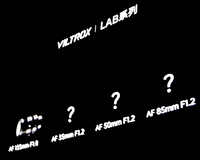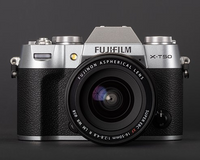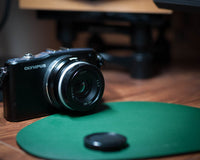This will be the second Pergear macro lens review after my earlier 60mm version. The new one is a 100mm f-2.8 lens capable of 2X magnification. They contacted me for a review and provided a sample lens for this review. Although I received a free lens, there are no affiliate links in this article, I do not receive any commissions on sales, and I will likely donate the lens to a good cause.
My friend Dennis Goulet who is experienced in macro photography came to help with the test shots. We also discussed various aspects of the lens. I thank Dennis, my coauthor of this article for his contribution.
Table of Contents
Pergear 100 mm f/2.8 Macro 2x
The shipping and inner packaging were similar to the previous one, snug, and well-fitting. The 100mm macro is longer than the 60mm as expected and also heavier. The solid feeling with all metal construction is comforting but the weight is substantial. Everything has a price! It is a solid piece of lens.
On The Camera
Like the previous one I reviewed, this lens has no electronic connection to the camera. Therefore there is no autofocus or any information like the f-stop or the focus distance passed on to the camera to be included in the EXIF set. Since the camera does not see any lens, you may have to change the camera setting to allow shutter release when there is no lens on the camera. I learned that from the previous mistakes.
Record Keeping
This time, we decided to write the f/stop on a piece of paper and take a picture of it before the actual photo. After the shoot, I used the LensTagger Lightroom plugin to add the f/stop to each shot. When exporting the images I kept all the EXIF data for curious readers. After the initial series of shooting the same frame at different apertures, we stayed with f/8 for all the other shots.
Evaluation Environment
For evaluating the macro photography performance, I will use the following:
- A Canon R7 32.5 MP APS-C CMOS sensor camera
- A sturdy tripod
- Macro focusing rail
- Cable or remote release
- A pair of LED light panels as needed
Shooting On A Tripod Is A Must
Most macro photography is done on a tripod anyway; but, for this lens, it is almost a must. The stiff focusing ring and aperture dial are still problems with this lens. If the focus ring had a little longer throw it could help for more precise focusing. Stiff movement combined with a short rotation changes the focus substantially even with minimal movements.
The aperture ring is also quite hard to rotate and has no click-stops, which makes using the lens unnecessarily harder. It is practically impossible to change the aperture or focus setting without some slight movement of the frame.
Started With A Pocket Watch Mechanism
Dennis had brought with him an old broken pocket watch. We set up its innards as the first series of images shot at apertures starting with 2.8 and up to 22. The slight increase in the depth of field at smaller f-stops can be seen even in these scaled-down images. The first series is at 1:1 magnification.
After that, we set it to 2:1 magnification. Although the image quality was reasonably good at 1:1, it seemed slightly less at the higher magnification, especially at wider apertures. As we approached f-11 and f-16 it looked better but not as good as at 1:1 magnification. The sweet spot for the aperture seems to be around 8-11. Generally, the unedited image quality was between acceptable and good at a price many could afford. With a little editing and applying proper sharpening, they can easily become very good depending on the subject.
We photographed a ruler to check the magnification levels, and I repeated the test the next day. Since the Canon R7 sensor measures 22.2 x 14.8 mm, we wanted to see how much of the ruler would fit in at 1:1 and 2:1 magnifications. As you can see in the following pictures, the magnification ratios are approximate. The 1:1 magnification fits 27 mm, and the 2:1 magnification captures 13 mm instead of 22.2 and 11.1 mm respectively.
The longer focal length provides a comfortable working distance from the subject even at the highest magnification. The following images show the approximate working distance at 1:1 and 2:1 magnifications. At less than these high magnifications, the working distance is even more comfortable as the pine branch detail shows in the last image.
I also photographed a pair of coins my sister gave me years ago. She told me they were antique Chinese coins, and I thought it would be a good fit to photograph them with a lens made in China. I did not know the significance of the writing and figures on them, so I checked with my contact at Pergear if it would be appropriate to share them here. She gave me the green light, and here they are. The large coin is 2.75″ in diameter and the smaller one is 2.25″.












